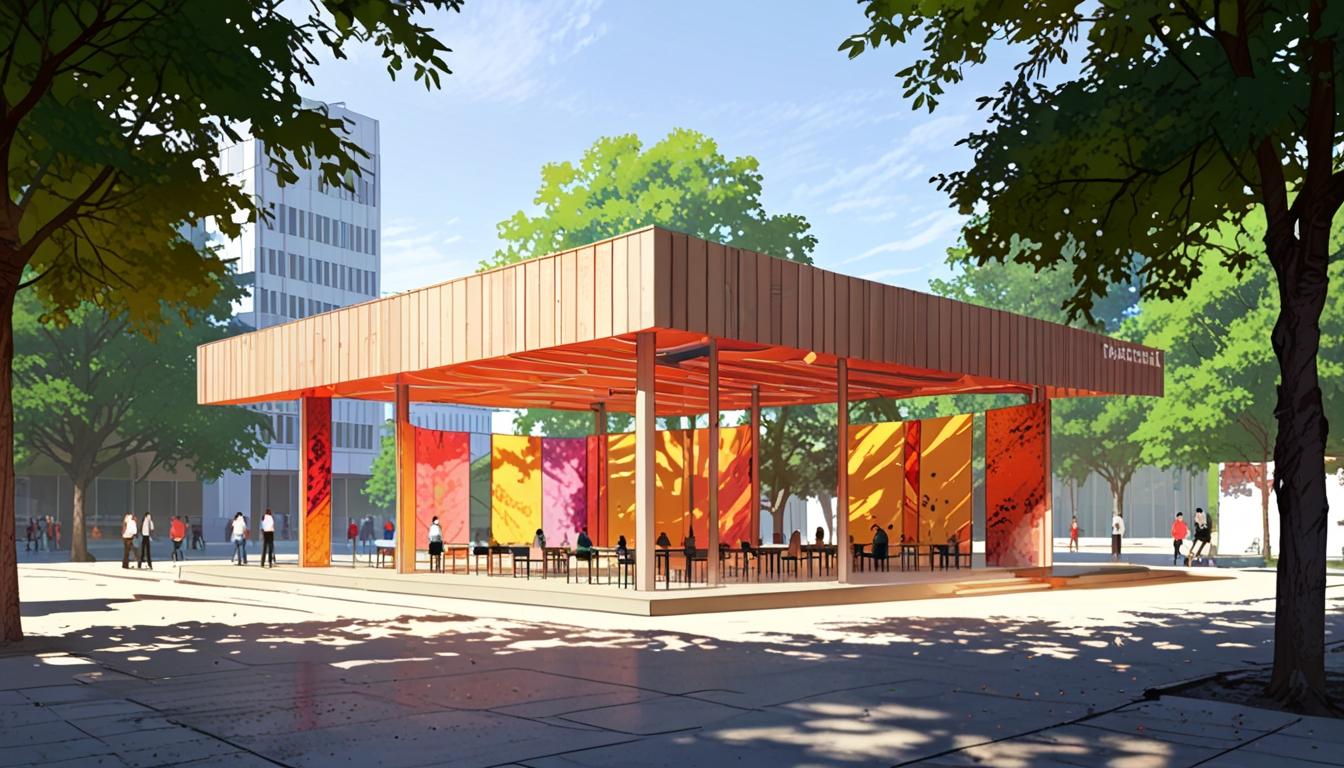At the international architectural exhibition in Venice, several national pavilions are presenting innovative projects that address pressing global issues through immersive and thought-provoking experiences.
Germany’s pavilion, titled “Stresstest,” confronts the escalating threat of extreme heat caused by climate change. Curators have designed a sensory experience that first exposes visitors to uncomfortably high temperatures, simulating future heat conditions in urban settings. The exhibition then transitions to a calmer environment showcasing architectural and urban planning solutions aimed at enhancing cities’ resilience to heatwaves. This initiative responds to alarming research indicating that global warming could cause an additional 2.3 million temperature-related deaths across European cities by the end of this century.
Latvia’s pavilion, “Landscape of Defence,” explores the impact of military fortifications on both the environment and local communities, a topic made especially relevant by recent efforts to strengthen the country’s border with Russia amid geopolitical tensions. Curators Liene Jākobsone and Ilka Ruby, alongside architecture firms Sampling and Nomad, examine how defensive structures such as fences and anti-tank trenches physically alter vulnerable landscapes. They also highlight the emotional effects these barriers impose on civilians, aiming to foster greater consideration of civilian perspectives in military defence planning.
Iceland presents “Lavaforming,” an imaginative project by architect duo Arnhildur Pálmadóttir and Arnar Skarphéðinsson of s.ap architects. Set in the speculative future year 2150, the installation envisions using volcanic lava flows—an abundant natural resource in Iceland—as sustainable building material for constructing new cities. Pálmadóttir explains that a single lava flow can provide enough material for building an entire city’s foundations in a short time, doing so in a manner that avoids environmentally damaging mining and fossil fuel energy consumption. This concept draws inspiration from Iceland’s dramatic volcanic landscapes, such as the eruption at Reykjanes in April 2021.
Qatar’s new permanent pavilion in the iconic Giardini venue—the first addition in almost 30 years—is designed by Beirut-born, Paris-based architect Lina Ghotmeh. The pavilion, entitled “Beyti Beytak. My home is your home. La mia casa è la tua casa,” engages with themes of hospitality and the cultural traditions of welcome found across the Middle East, North Africa, and South Asia. Featuring contributions from over 20 architects, the exhibition bridges historical modernist figures like Sri Lanka’s Minnette de Silva with specialists in Islamic architecture, including Egypt’s Abdel-Wahed El-Wakil. Contemporary architects such as Dhaka-based Marina Tabassum, recognised for her award-winning temporary flood relief housing in Bangladesh, are also featured. One highlight includes a recreation of the Sidi Harazem thermal bath complex by Aziza Chaouni, illustrating the pavilion’s fusion of cultural heritage and modern design.
Finally, Luxembourg’s pavilion, “Sonic Investigations,” shifts the focus from visual to auditory experience. Created by architects Valentin Bansac, Mike Fritsch, and cartographer Alice Loumeau, the project draws inspiration from John Cage’s renowned piece 4’33’’ and encourages visitors to engage in "deep listening." Sound artist Ludwig Berger contributes a commissioned work composed of field recordings from various Luxembourg locations. The installation seeks to uncover the subtle influences shaping both built and natural environments, inviting discovery through attentive listening.
These diverse national presentations underscore the broad scope of contemporary architectural discourse at Venice’s exhibition, blending environmental, geopolitical, cultural, and sensory explorations to reflect urgent global challenges and the innovative ways designers respond to them.
Source: Noah Wire Services
